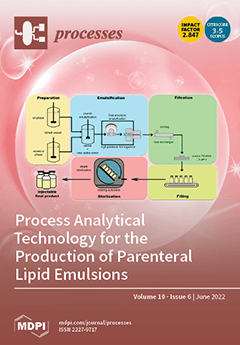The high therapeutic effect of targeted radioisotope/radionuclide therapy (TRT) using α-emitters, especially
225Ac, is attracting attention worldwide. However, the only
225Ac production method that has been put into practical use is extraction from a
229Th generator derived from the nuclear
[...] Read more.
The high therapeutic effect of targeted radioisotope/radionuclide therapy (TRT) using α-emitters, especially
225Ac, is attracting attention worldwide. However, the only
225Ac production method that has been put into practical use is extraction from a
229Th generator derived from the nuclear fuel
233U, and it is unlikely that this method alone is able to meet future global medical demand. Development towards new
225Ac production methods is in progress. These new
225Ac production methods require the irradiation of
232Th or
226Ra using an accelerator or a nuclear reactor. Global competition has already begun in the race to secure a reliable supply of
232Th and
226Ra, as well as
229Th for the conventional production method. Japan is a “resource-poor country” that depends on foreign countries for most of its needs. As such, it is difficult for Japan to secure raw materials such as
232Th and
226Ra for medical application. In this paper, we look back on our research at the National Institutes for Quantum Science and Technology (QST) in the fields of
225Ac production and
225Ac-labeled pharmaceutical development. We present the history and details of our research from 2011, as well as the development of a collaboration between QST and Nihon Medi-Physics that focuses on research into
225Ac production via
226Ra(p,2n)
225Ac reaction using an accelerator. Furthermore, we review the valuable discussion at the 2018 Joint IAEA-JRC Workshop—“Supply of Actinium-225”, an international conference that we participated in. Overall, the statuses of external
225Ac supply, domestic production, and distribution are discussed, as are the latest developments in
225Ac production methods,
225Ac pharmaceuticals, and future prospects for the domestic production of
225Ac in Japan, a country lacking natural resources for medical applications.
Full article





